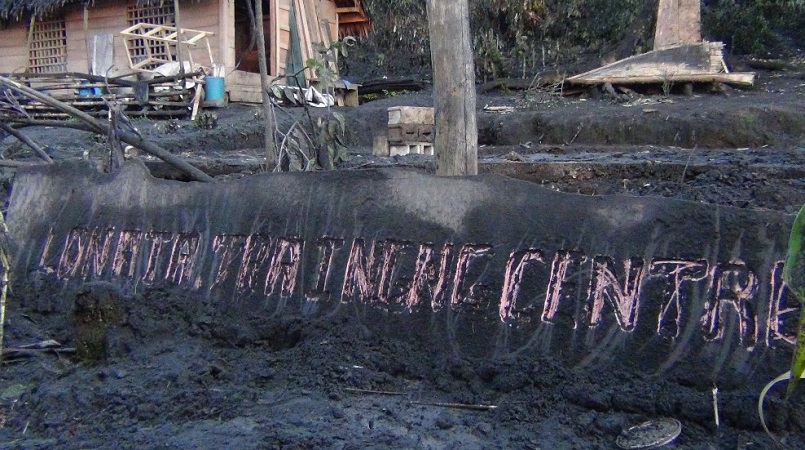
A landslide and flash flood on the Vanuatu island of Ambae is complicating evacuation efforts, with as many as 800 people now sheltering in emergency relief centres.
Ambae Island is home to 11,000 people, and for the second time in six months Manaro volcano on top of Mount Lombenben has started rumbling, spewing torrents of ash, gas and rocks from its crater. The debris is causing breathing and health problems, and threatening livelihoods by burying vegetable plots and crops.
The government has declared a three-month state of emergency while it works with non-governmental organisations to safely evacuate the island and secure new homes for displaced islanders who may never be able to return.
Acting prime minister Jean Pierre Nirua said Vanuatu was the most vulnerable country in the world to natural disasters and was currently stretched by responding to the clean-up of last month’s cyclone Hola and the unfolding Ambae emergency.
According to the Vanuatu meteorology and geohazards department the volcano remains at level three, with a danger zone surrounding the cone of three kilometres.
Due to eruption activity the cone of the volcano had widened, resulting in ash fall, gas, and acid rain, as well as a heightened risk of landslides and flash floods.
Olivia Finau from the Vanuatu Red Cross said there was a likelihood it would remain active for some time, forcing the government to plan for the permanent relocation of Ambae Islanders to nearby Islands.
Some neighbouring chiefs had already made offers of land suitable for relocation to the government.
A reconciliation ceremony was staged last week between the Island chiefs of Santos and Ambae, after Santos Islanders took offence at the alleged ungratefulness of evacuees who stayed on their island last year, the Vanuatu Daily Post reports.
Access to the island for NGOs and government officials is proving challenging after a local airline cancelled flights, forcing the government to charter a plane on Tuesday.
Southern parts of Ambae Island were worst hit by ash fall, and Unicef workers on the ground reported people with asthma or other respiratory problems were having difficulty breathing.
“It is really challenging for the affected community, it is their home and all they know, they’ve been there for their entire life,” said Uncief Pacific’s chief of communications Cate Heinrich, adding that there were more than 5,000 children on Ambae.
“At the moment our priority is helping women and children who have been affected, making sure children have safe spaces and helping them begin to process and understand what is happening to their home, using techniques like drawing.”
Many water sources have been contaminated by ash, with water needing to be trucked in or purified using tablets.
Some schools were closed, and there was a sense of limbo as locals waited for the government to establish a time-line for the evacuation, which was being conducted much more slowly and safely than the DIY-style evacuation last year, said Heinrich.
On Monday the Chinese ambassador Liu Quan presented a cheque for US$100,000 to the Vanuatu government to aid in the relief effort.
The Australian government provided AU$3.2m (US$2.4 million) to support early recovery efforts for those affected by the Ambae volcano last year, and is ready to give further assistance, a spokesperson said.
The New Zealand government has provided more than NZ$1.5m (US$1 million) in assistance, as well as technical support and relief supplies.
Vanuatu is no stranger to natural disasters, and its 83 islands are stuck in the middle of hurricane alley and dot the border of the “ring of fire” – a belt around the Pacific prone to earthquakes and volcanic eruptions.
Photo Watchers. News
